2020-08-21
Back to listThe biennial European Conference on Computer Vision (ECCV), one of the top international academic conferences in computer vision, will run Aug 23 – 27. Due to the COVID-19 pandemic, the conference organizers have decided to cancel the physical event and move the conference online.
This year, 1361 papers out of 5025 submissions have made it to ECCV 2020, yielding a 27 percent paper acceptance rate, down from 32 percent in 2019. The acceptance rate for oral presentation is only 2 percent, which is the lowest among the recent editions of ECCV.
Baidu has had 11 research papers accepted at ECCV 2020, covering a wide range of topics such as localization for autonomous driving, aerial scene recognition, human pose estimation, and video object segmentation. You can learn more about our work being presented in the list below.
Baidu researchers will also host three virtual talks – “Vision Techs in AI City”, “High-Quality Custom AI Models Without Having to Code”, and “3D Perception and Planning of Autonomous Driving and Robotics” – on August 24, 17:45-18:15 (UTC+8). More details are provided at the bottom of the page.
1. Cross-Task Transfer for Geotagged Audiovisual Aerial Scene Recognition
Di Hu, Xuhong Li, Lichao Mou, Pu Jin, Dong Chen, Liping Jing, Xiaoxiang Zhu, Dejing Dou
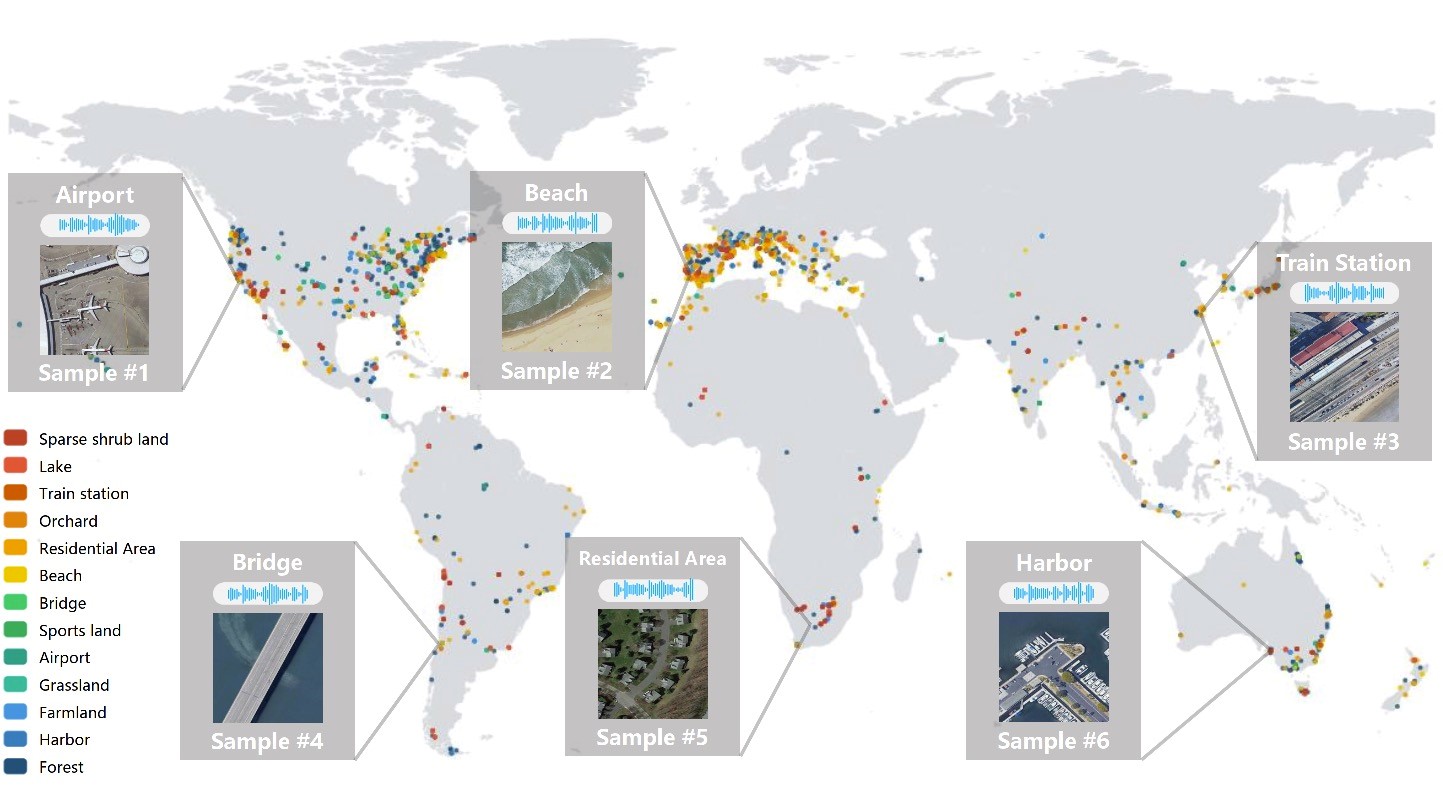
Aerial scene recognition is a fundamental task in remote sensing and has recently received increased interest. While the visual information from overhead images with powerful models and efficient algorithms yields considerable performance on scene recognition, it still suffers from the variation of ground objects, lighting conditions etc. Inspired by the multi-channel perception theory in cognition science, in this paper, for improving the performance on the aerial scene recognition, we explore a novel audiovisual aerial scene recognition task using both images and sounds as input. Based on an observation that some specific sound events are more likely to be heard at a given geographic location, we propose to exploit the knowledge from the sound events to improve the performance on the aerial scene recognition. For this purpose, we have constructed a new dataset named AuDio Visual Aerial sceNe reCognition datasEt (ADVANCE). With the help of this dataset, we evaluate three proposed approaches for transferring the sound event knowledge to the aerial scene recognition task in a multimodal learning framework, and show the benefit of exploiting the audio information for the aerial scene recognition. The source code is publicly available for reproducibility purposes.
Paper: https://arxiv.org/abs/2005.08449
2. DA4AD: End-to-end Deep Attention-based Visual Localization for Autonomous Driving
Yao Zhou, Guowei Wan, Shenhua Hou, Li Yu, Gang Wang, Xiaofei Rui, Shiyu Song
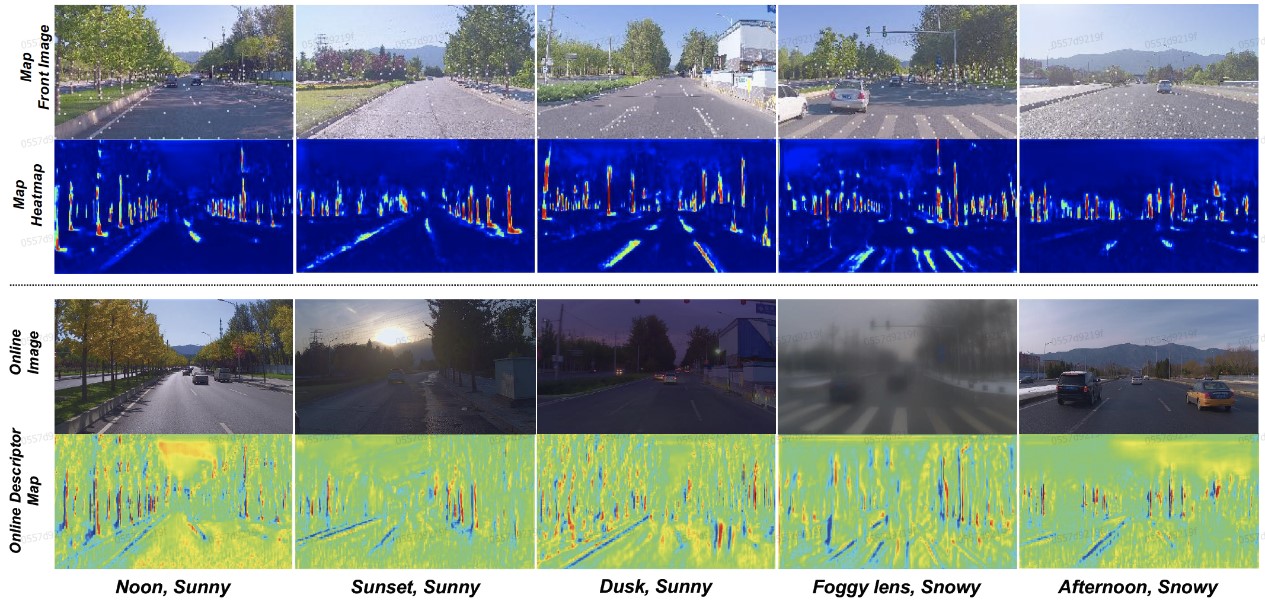
We present a visual localization framework based on novel deep attention aware features for autonomous driving that achieves centimeter level localization accuracy. Conventional approaches to the visual localization problem rely on handcrafted features or human-made objects on the road. They are known to be either prone to unstable matching caused by severe appearance or lighting changes, or too scarce to deliver constant and robust localization results in challenging scenarios. In this work, we seek to exploit the deep attention mechanism to search for salient, distinctive and stable features that are good for long-term matching in the scene through a novel end-to-end deep neural network. Furthermore, our learned feature descriptors are demonstrated to be competent to establish robust matches and therefore successfully estimate the optimal camera poses with high precision. We comprehensively validate the effectiveness of our method using a freshly collected dataset with high-quality ground truth trajectories and hardware synchronization between sensors. Results demonstrate that our method achieves a competitive localization accuracy when compared to the LiDAR-based localization solutions under various challenging circumstances, leading to a potential low-cost localization solution for autonomous driving.
Paper: https://arxiv.org/abs/2003.03026
3. Segment as Points for Efficient Online Multi-Object Tracking and Segmentation
Zhenbo Xu, Wei Zhang, Xiao Tan, Wei Yang, Huan Huang, Shilei Wen, Errui Ding, Liusheng Huang

Current multi-object tracking and segmentation (MOTS) methods follow the tracking-by-detection paradigm and adopt convolutions for feature extraction. However, as affected by the inherent receptive field, convolution-based feature extraction inevitably mixes up the foreground features and the background features, resulting in ambiguities in the subsequent instance association. In this paper, we propose a highly effective method for learning instance embeddings based on segments by converting the compact image representation to un-ordered 2D point cloud representation. Our method generates a new tracking-by-points paradigm where discriminative instance embeddings are learned from randomly selected points rather than images. Furthermore, multiple informative data modalities are converted into point-wise representations to enrich point-wise features. The resulting online MOTS framework, named PointTrack, surpasses all the state-of-the-art methods including 3D tracking methods by large margins (5.4% higher MOTSA and 18 times faster over MOTSFusion) with the near real-time speed (22 FPS). Evaluations across three datasets demonstrate both the effectiveness and efficiency of our method. Moreover, based on the observation that current MOTS datasets lack crowded scenes, we build a more challenging MOTS dataset named APOLLO MOTS with higher instance density. Both APOLLO MOTS and our codes are publicly available at this https URL.
Paper: https://arxiv.org/abs/2007.01550
4. Graph-PCNN: Two Stage Human Pose Estimation with Graph Pose Refinement
Jian Wang, Xiang Long, Yuan Gao, Errui Ding, Shilei Wen
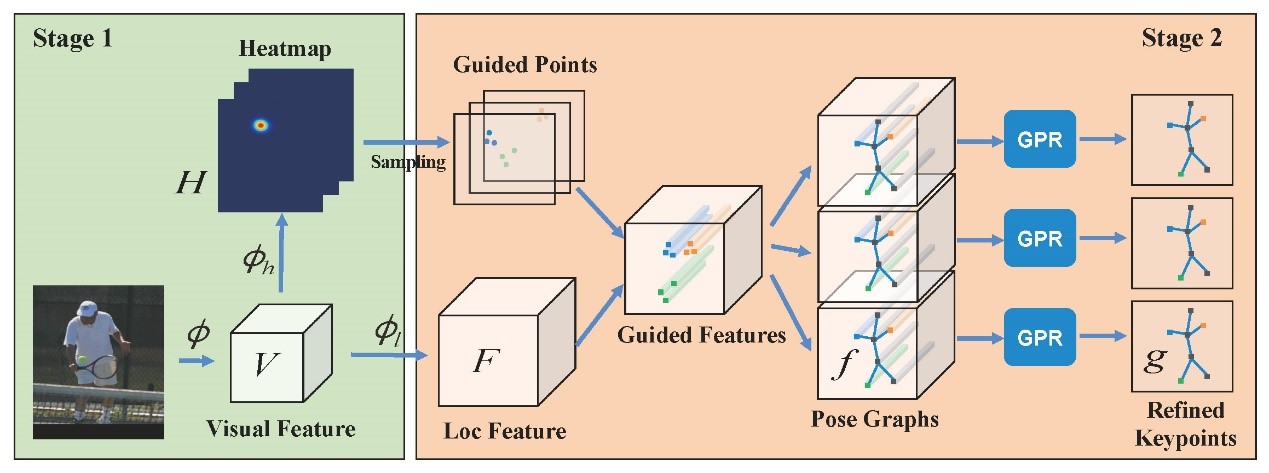
Recently, most of the state-of-the-art human pose estimation methods are based on heatmap regression. The final coordinates of keypoints are obtained by decoding heatmap directly. In this paper, we aim to find a better approach to get more accurate localization results. We mainly put forward two suggestions for improvement: 1) different features and methods should be applied for rough and accurate localization, 2) relationship between keypoints should be considered. Specifically, we propose a two-stage graph-based and model-agnostic framework, called Graph-PCNN, with a localization subnet and a graph pose refinement module added onto the original heatmap regression network. In the first stage, heatmap regression network is applied to obtain a rough localization result, and a set of proposal keypoints, called guided points, are sampled. In the second stage, for each guided point, different visual feature is extracted by the localization subnet. The relationship between guided points is explored by the graph pose refinement module to get more accurate localization results. Experiments show that Graph-PCNN can be used in various backbones to boost the performance by a large margin. Without bells and whistles, our best model can achieve a new state-of-the-art 76.8% AP on COCO test-dev split.
Paper: https://arxiv.org/abs/2007.10599
5. Monocular 3D Object Detection via Feature Domain Adaptation
Xiaoqing Ye, Liang Du, Yifeng Shi, Yingying Li, Xiao Tan, Jianfeng Feng, Errui Ding, Shilei Wen

Monocular 3D object detection is a challenging task due to unreliable depth, resulting in a distinct performance gap between monocular and LiDAR-based approaches. In this paper, we propose a novel domain adaptation based monocular 3D object detection frame- work named DA-3Ddet, which adapts the feature from unsound image- based pseudo-LiDAR domain to the accurate real LiDAR domain for performance boosting. In order to solve the overlooked problem of in- consistency between the foreground mask of pseudo and real LiDAR caused by inaccurately estimated depth, we also introduce a context- aware foreground segmentation module which helps to involve relevant points for foreground masking. Extensive experiments on KITTI dataset demonstrate that our simple yet effective framework outperforms other state-of-the-arts by a large margin.
6. GINet: Graph Interaction Network for Scene Parsing
Tianyi Wu, Yu Lu, Yu Zhu, Chuang Zhang, MingWu, Zhanyu Ma, Guodong Guo
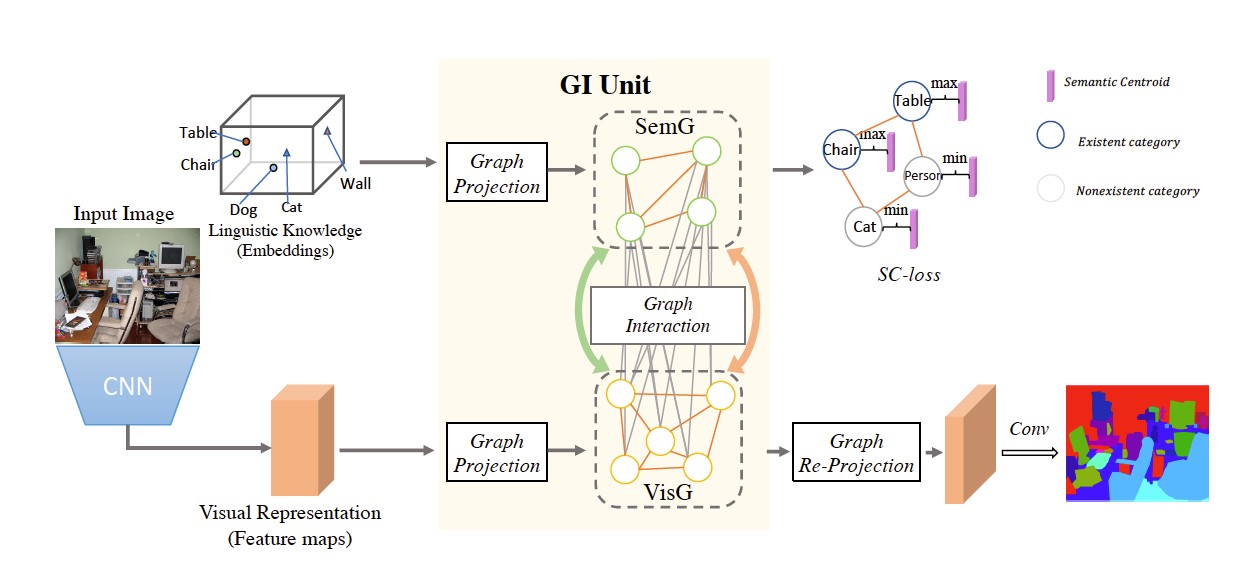
Recently, context reasoning using image regions beyond local convolution has shown great potential for scene parsing. In this work, we explore how to incorporate the linguistic knowledge to promote con- text reasoning over image regions by proposing a Graph Interaction unit (GI unit) and a Semantic Context Loss (SC-loss). The GI unit is capable of enhancing feature representations of convolution networks over high-level semantics and learning the semantic coherency adaptively to each sample. Specifically, the dataset-based linguistic knowledge is first incorporated in the GI unit to promote context reasoning over the visual graph, then the evolved representations of the visual graph are mapped to each local representation to enhance the discriminated capability for scene parsing. GI unit is further improved by the SC-loss to enhance the semantic representations over the exemplar-based semantic graph. We perform full ablation studies to demonstrate the effectiveness of each component in our approach. Particularly, the proposed GINet outperforms the state-of-the-art approaches on the popular benchmarks, including Pascal-Context and COCO Stuff.
7. DVI: Depth Guided Video Inpainting for Autonomous Driving
Miao Liao, Feixiang Lu, Dingfu Zhou, Sibo Zhang, Wei Li, and Ruigang Yang
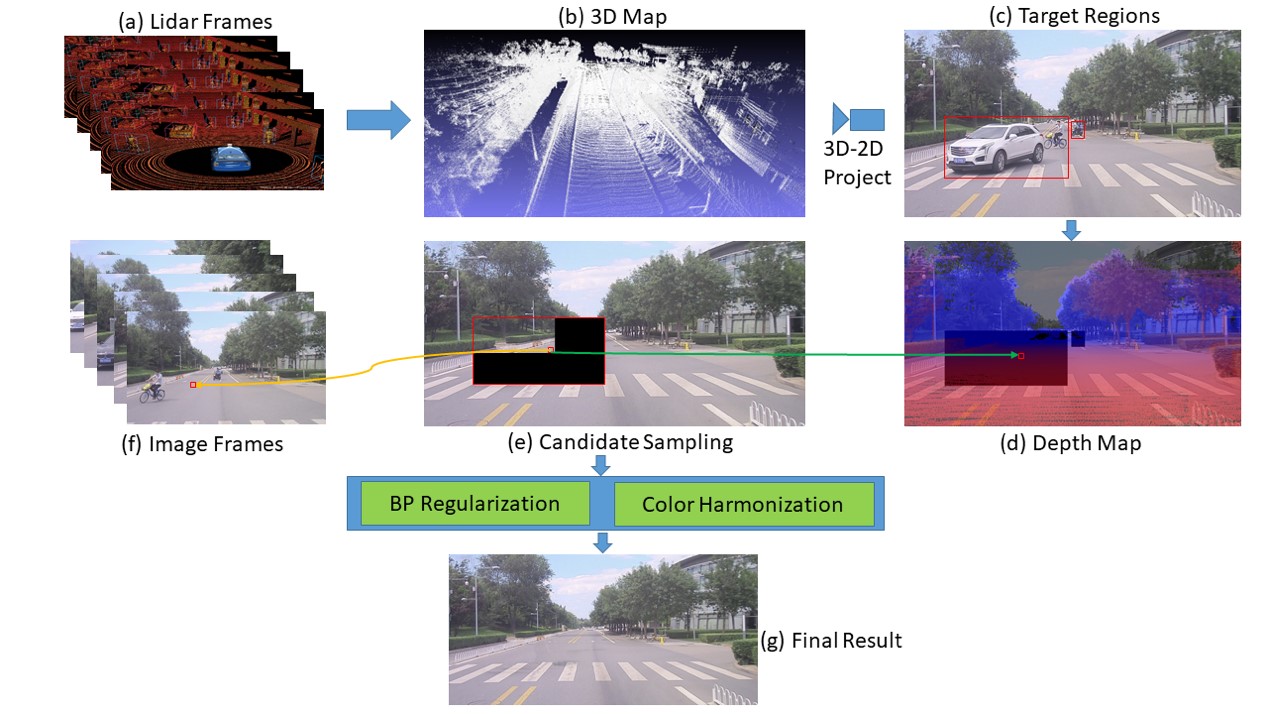
To get clear street-view and photo-realistic simulation in autonomous driving, we present an automatic video inpainting algorithm that can remove traffic agents from videos and synthesize missing regions with the guidance of depth/point cloud. By building a dense 3D map from stitched point clouds, frames within a video are geometrically correlated via this common 3D map. In order to fill a target inpainting area in a frame, it is straightforward to transform pixels from other frames into the current one with correct occlusion. Furthermore, we are able to fuse multiple videos through 3D point cloud registration, making it possible to inpaint a target video with multiple source videos. The motivation is to solve the long-time occlusion problem where an occluded area has never been visible in the entire video. To our knowledge, we are the first to fuse multiple videos for video inpainting. To verify the effectiveness of our approach, we build a large inpainting dataset in the real urban road environment with synchronized images and Lidar data including many challenge scenes, e.g., long time occlusion. The experimental results show that the proposed approach outperforms the state-of-the-art approaches for all the criteria, especially the RMSE (Root Mean Squared Error) has been reduced by about 13%.
Paper: https://arxiv.org/abs/2007.08854
8. Collaborative Video Object Segmentation by Foreground-Background Integration
Zongxin Yang, Yunchao Wei, Yi Yang
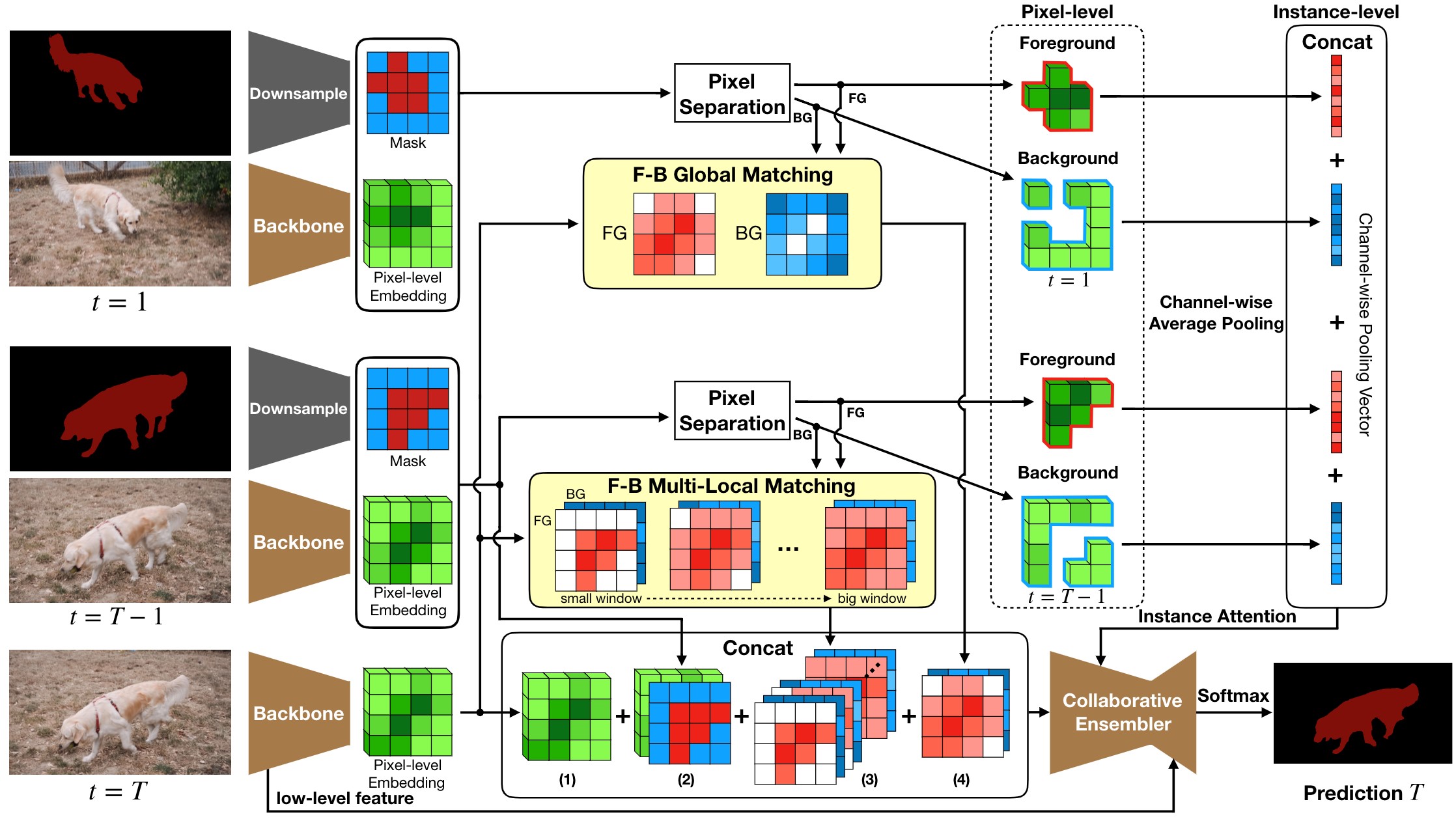
This paper investigates the principles of embedding learning to tackle the challenging semi-supervised video object segmentation. Different from previous practices that only explore the embedding learning using pixels from foreground object (s), we consider background should be equally treated and thus propose Collaborative video object segmentation by Foreground-Background Integration (CFBI) approach. Our CFBI implicitly imposes the feature embedding from the target foreground object and its corresponding background to be contrastive, promoting the segmentation results accordingly. With the feature embedding from both foreground and background, our CFBI performs the matching process between the reference and the predicted sequence from both pixel and instance levels, making the CFBI be robust to various object scales. We conduct extensive experiments on three popular benchmarks, i.e., DAVIS 2016, DAVIS 2017, and YouTube-VOS. Our CFBI achieves the performance (J$F) of 89.4%, 81.9%, and 81.4%, respectively, outperforming all the other state-of-the-art methods.
Paper: https://arxiv.org/abs/2003.08333
GitHub: https://github.com/z-x-yang/CFBI
9. Describing Unseen Videos via Multi-Modal Cooperative Dialog Agents
Ye Zhu, Yu Wu, Yan Yan, Yi Yang
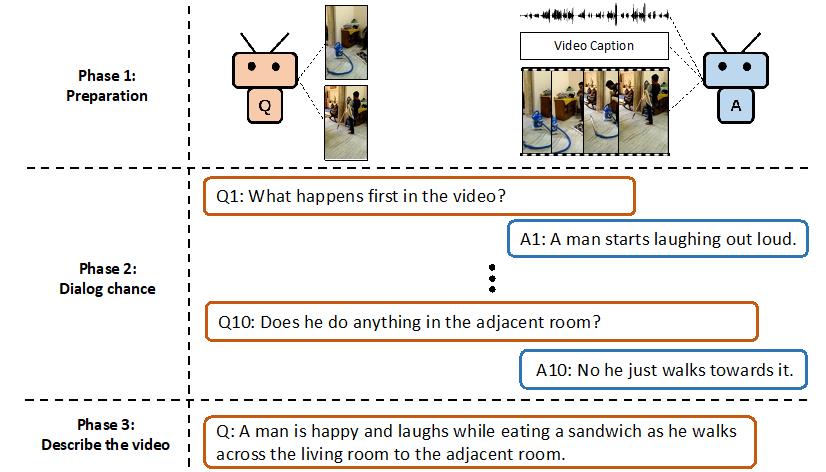
With the arising concerns for the AI systems provided with direct access to abundant sensitive information, researchers seek to develop more reliable AI with implicit information sources. To this end, in this paper, we introduce a new task called video description via two multi-modal cooperative dialog agents, whose ultimate goal is for one conversational agent to describe an unseen video based on the dialog and two static frames. Specifically, one of the intelligent agents - Q-BOT - is given two static frames from the beginning and the end of the video, as well as a finite number of opportunities to ask relevant natural language questions before describing the unseen video. A-BOT, the other agent who has already seen the entire video, assists Q-BOT to accomplish the goal by providing answers to those questions. We propose a QA-Cooperative Network with a dynamic dialog history update learning mechanism to transfer knowledge from A-BOT to Q-BOT, thus helping Q-BOT to better describe the video. Extensive experiments demonstrate that Q-BOT can effectively learn to describe an unseen video by the proposed model and the cooperative learning method, achieving the promising performance where Q-BOT is given the full ground truth his- tory dialog.
GitHub: https://github.com/L-YeZhu/Video-Description-via-Dialog-Agents-ECCV2020.
10. Toward Faster and Simpler Matrix Normalization via Rank-1 Update
Tan Yu, Yunfeng Cai, and Ping Li
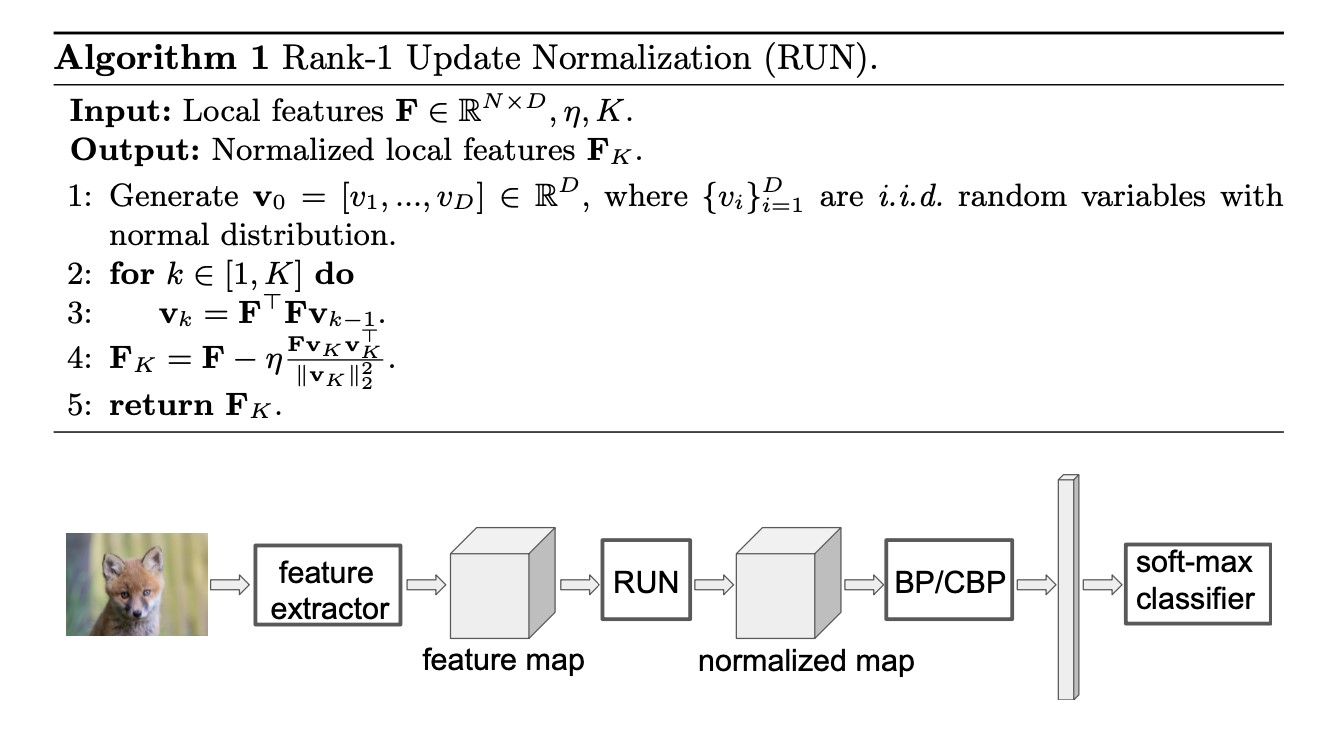
Bilinear pooling has been used in many computer vision tasks and recent studies discover that matrix normalization is a vital step for achieving impressive performance of bilinear pooling. The standard matrix normalization, however, needs singular value decomposition (SVD), which is not well suited in the GPU platform, limiting its efficiency in training and inference. To resolve this issue, the Newton-Schulz (NS) iteration method has been proposed to approximate the matrix square-root. Although it is GPU-friendly, the NS iteration still takes several (expensive) iterations of matrix-matrix multiplications. Further- more, the NS iteration is incompatible with the compact bilinear features obtained from Tensor Sketch (TS) or Random Maclaurin (RM). To over- come those known limitations, in this paper we propose a “rank-1 update normalization” (RUN), which only needs matrix-vector multiplications and is hence substantially more efficient than the NS iteration using matrix-matrix multiplications. Moreover, RUN readily supports the normalization on compact bilinear features from TS or RM. Besides, RUN is simpler than the NS iteration and easier for implementation in practice. As RUN is a differentiable procedure, we can plug it in a CNN-based an end-to-end training setting. Extensive experiments on four public bench- marks demonstrates that, for the full bilinear pooling, RUN achieves comparable accuracy with a substantial speedup over the NS iteration. For the compact bilinear pooling, RUN achieves comparable accuracy with a significant speedup over SVD-based normalization.
11. Multiple Sound Sources Localization from Coarse to Fine
Rui Qian, Di Hu, Heinrich Dinkel, Mengyue Wu, Ning Xu, Weiyao Lin
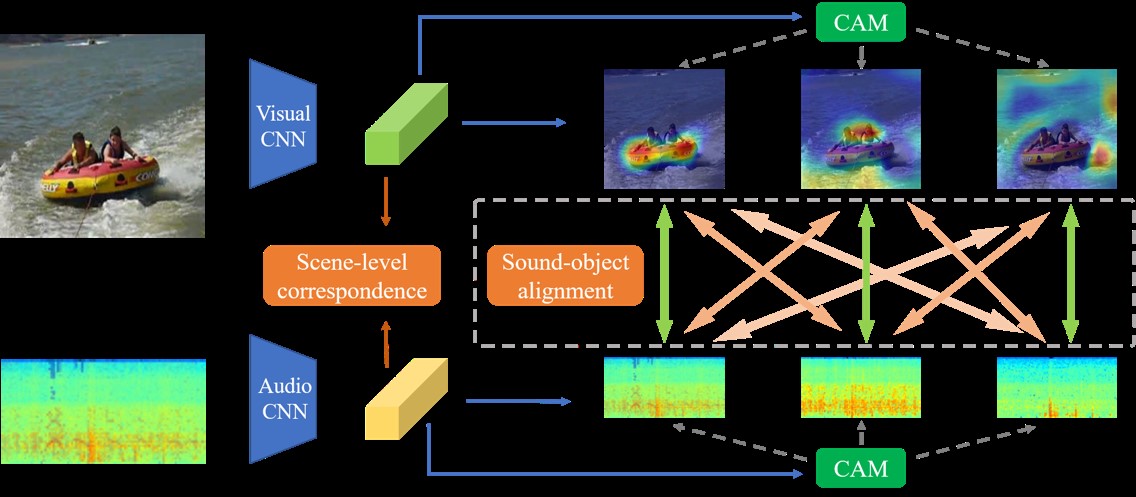
How to visually localize multiple sound sources in unconstrained videos is a formidable problem, especially when lack of the pairwise sound-object annotations. To solve this problem, we develop a two-stage audiovisual learning framework that disentangles audio and visual representations of different categories from complex scenes, then performs cross-modal feature alignment in a coarse-to-fine manner. Our model achieves state-of-the-art results on public dataset of localization, as well as considerable performance on multi-source sound localization in complex scenes. We then employ the localization results for sound separation and obtain comparable performance to existing methods. These outcomes demonstrate our model's ability in effectively aligning sounds with specific visual sources. Code is available at this https URL
Paper: https://arxiv.org/abs/2007.06355
